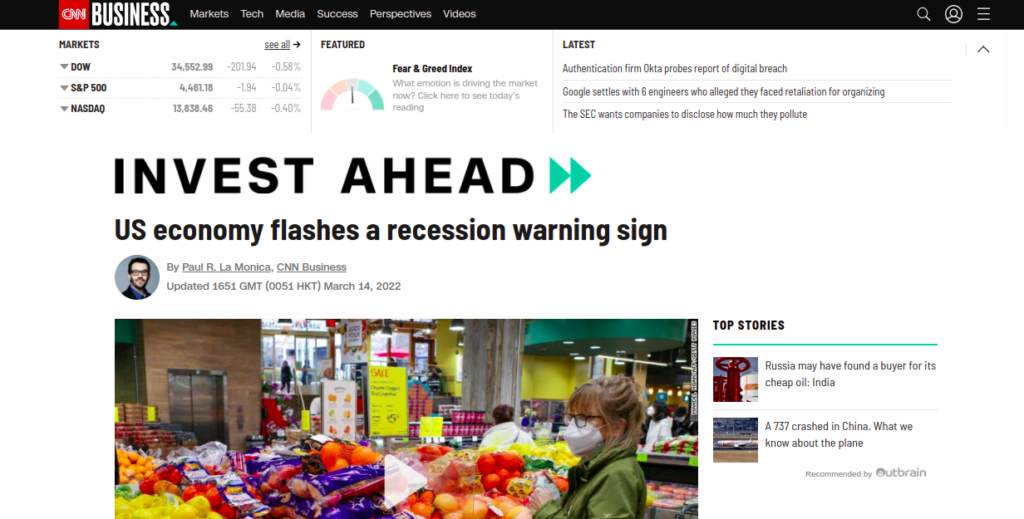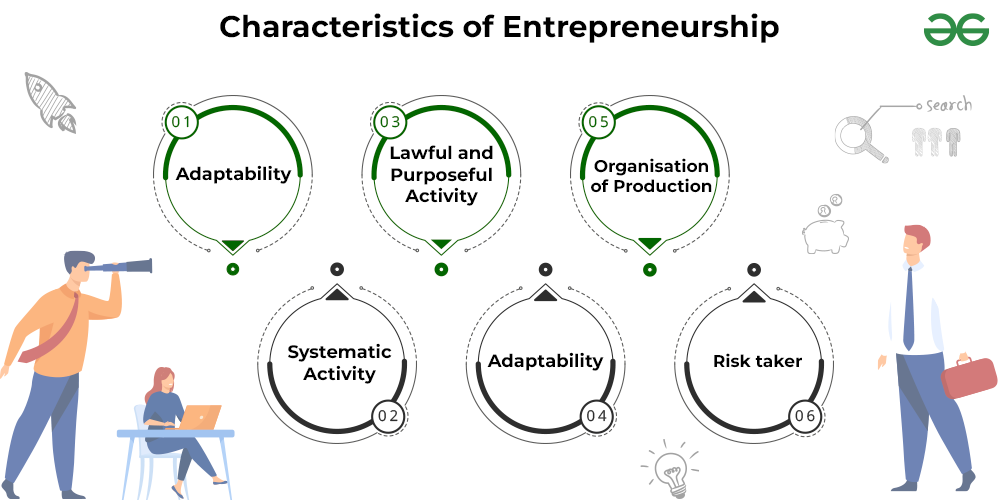The looming U.S. economy recession warning has sparked concerns among investors and analysts alike, particularly as external factors such as a trade war impact intensify. With the Federal Reserve’s interest rates teetering on the edge of recalibration, many citizens are feeling the pinch of increasing economic uncertainty. Consumer sentiment recession fears are palpable, as evidenced by the recent drop in confidence levels reported by the University of Michigan. As we eye the economic landscape leading into 2025, it’s crucial to dissect how these elements interplay within the larger framework of the U.S. economy. Investors are left wondering if these developments signal the beginning of a severe downturn or merely a passing phase in the economic cycle.
As we navigate the complexities surrounding the risks that may lead to a downturn in the U.S. economic landscape, the signs of a potential recession become increasingly concerning. The interplay between international tensions, such as trade disputes, and domestic financial policy, including adjustments to the Federal Reserve’s interest rates, has generated waves of uncertainty among households and businesses. This evolving situation casts a shadow over consumer confidence, which has seen significant declines in recent months. Understanding the broader implications of these economic factors is vital as stakeholders prepare for what lies ahead in the forecast for 2025. In a landscape painted by volatility and fluctuating consumer sentiment, the focus now turns to how policymakers will address these challenges.
Understanding the Current U.S. Economy Landscape
The U.S. economy is facing a challenging landscape as we move further into 2025. With the effects of increased tariffs since late 2022, the repercussions are becoming extensive. A declining consumer sentiment index and surging economic uncertainty are leading many analysts to predict a slowdown. As the Federal Reserve braces for the potential impacts of a recession, it is vital to consider the interconnectedness of trade policies and consumer behavior. The escalating trade war with countries like China and Mexico has led to increased tariffs on American goods, further complicating the economic recovery expected after the pandemic.
Additionally, the turmoil in the stock market has not helped consumer confidence. According to recent reports, consumer sentiment has fallen to its lowest point since 2022, signaling a worrying trend as consumers reconsider their spending and investment habits in an uncertain economic environment. As the Federal Reserve weighs interest rate decisions, the stability of the economy hangs in a delicate balance between managing inflation and supporting growth.
The unpredictability surrounding future trade regulations and tariffs is contributing to a state of apprehension among businesses and consumers alike. The situation is not merely a passing phase; sustained uncertainty could lead to long-lasting implications for the U.S. economy. Businesses are shifting strategies, hedging against potential downturns by reducing hiring and investments, which in turn creates a feedback loop affecting consumer spending. Experts warn this could lead us closer to a recession if confidence does not improve, reinforcing the idea that careful navigation of these economic challenges is crucial for sustained growth.
The Impact of Federal Reserve Interest Rates on Economic Stability
One of the key roles of the Federal Reserve is to manage interest rates effectively to foster economic growth while controlling inflation. In the current environment marked by heightened economic uncertainty and fears of recession, the Fed faces significant challenges. With consumer sentiment waning and the risk of a recession looming, the Fed’s decision on interest rates carries immense weight. Analysts speculate that maintaining lower interest rates could offer some relief to borrowers, stimulating spending and investment. However, this must be weighed carefully against the potential rise in inflation rates caused by such policies.
On the other side, keeping interest rates elevated may stabilize inflation but risks further stifling economic growth and confidence. As many factors contribute to economic fluctuations, including the ongoing trade war, the Federal Reserve must tread lightly to avoid exacerbating a potentially unstable situation. Their actions will significantly influence not just the financial markets, but also consumer confidence and behavior in the face of increasing economic volatility.
The decision to cut or maintain interest rates during such testing times requires understanding not just macroeconomic indicators but also how public perception factors into economic health. By increasing rates during uncertain times, the Fed risks worsening the current economic decline as businesses may scale back on expansion, hiring, and investment. Ultimately, the right interest rate policy will need to strike a balance between curbing inflation and encouraging economic resilience, and may involve weighing interests nearly on a month-to-month basis until consumer sentiment begins to stabilize.
Trade War Effects on the U.S. Economy in 2025
The trade war between the U.S. and its international partners, notably China, Mexico, and Canada, continues to have profound implications for the American economy as we further navigate through 2025. As tariffs increase on exported goods, many U.S. manufacturers are feeling the pinch, with increased costs getting passed down to consumers. This ripple effect raises prices on everyday goods, contributing to inflation that is felt both by consumers and businesses alike. The cascading impacts lead to a cautious buying environment, which spurs a reduction in overall economic growth.
Moreover, the instability created by erratic trade policies and tariff adjustments contributes to overall market volatility. Investors are becoming increasingly wary, as seen in recent stock market sell-offs. Confounding factors such as rising imports costs and diminishing export profitability are putting pressure on the profitability of many sectors, leading to diminished consumer confidence and spending. The long-term impacts of these tariffs could stagnate growth, needing careful management to ensure recovery underway isn’t derailed.
The uncertainty brought forth by the trade war has not only affected the economic landscape but also dampened the spirits of businesses looking to invest in growth. As many companies pivot to limit their exposure, the entire economic chain—from consumer spending to stock pricing—feels the strain. Economists warn that as domestic production costs rise, the ripple effects could lead to a self-fulfilling prophecy of economic downturn, culminating in a potential recession if bold actions are not taken swiftly. Addressing these economic pressures with constructive dialogue and strategic trade agreements could offer a pathway toward stabilization and growth.
Consumer Sentiment and its Role in Economic Outlook
Consumer sentiment has historically been a reliable indicator of economic health, and the current index indicates a troubling decline. With figures dropping to lows last seen in late 2022, the implications for the economy are paramount. It reflects a broad unease among consumers regarding their financial stability and future economic conditions, induced largely by the ongoing trade war and fluctuations in stock markets. When consumers hold back on spending due to declining confidence, it can precipitate a downward economic spiral, which raises alarms for economists and policymakers alike.
Understanding the impact of consumer sentiment on economic activity is crucial, especially in the context of the potential for recession. As households become more cautious, spending on discretionary items falls, directly affecting businesses that depend on consumer-driven demand for growth. This reduced consumer activity can subsequently lead to businesses cutting back on hiring and investment, further exacerbating economic uncertainty and potentially initiating a recessionary cycle.
The relationship between consumer sentiment and economic vitality presents a paradox: as consumers grasp at economic uncertainty with skepticism and doubt, their behaviors can crystallize the very fears they hold. The University of Michigan’s recent readings on consumer sentiment suggest that this is a critical moment for intervention. Policymakers may need to consider additional stimulus measures or targeted economic relief to bolster confidence and encourage spending. By addressing these consumer concerns proactively, economic leaders can work to rebuild trust and facilitate a quicker path toward recovery.
Navigating Economic Uncertainty with Strategic Policy Decisions
In the midst of rising economic uncertainty, effective policymaking becomes paramount. As the impacts of tariff policies take their toll alongside fluctuating consumer sentiment, decision-makers must devise strategies that encourage economic stability while navigating potential recession warnings. A key focus includes fiscal discipline to help stabilize public perception of government efforts to manage the economy wisely. There is a clear need for dialogue and cooperation between government entities and the private sector to stimulate growth and instill confidence in the markets.
Moreover, as the Federal Reserve contemplates its next move regarding interest rates, it is crucial to foster an environment that prioritizes sustainable growth while balancing inflation concerns. A carefully orchestrated strategy of fiscal and monetary policy could rebound consumer confidence and serve as a catalyst toward economic recovery, transforming uncertainty into opportunities for growth.
Furthermore, policymakers are in a complex dance where they need to discern how to implement necessary reforms without inducing further economic distress. This challenge is magnified by the unpredictable nature of international trade relationships. By promoting healthy dialogues that reduce tensions and potentially influence the trajectory of tariffs and economic regulations, leaders can help cultivate a more predictable environment that inspires confidence among consumers and investors alike. Ultimately, addressing these uncertainties with transparent and sound policy approaches may lead the U.S. economy into a phase of growth and resilience.
The Potential for a U.S. Economy Recession: Factors to Consider
As discussions regarding a potential U.S. economy recession heat up, it is essential to consider the multitude of factors that contribute to this warning. Economists have pointed out that the convergence of a strained trade environment, declining consumer sentiment, and rising economic uncertainty points toward a potential recession on the horizon. The Federal Reserve’s decisions regarding interest rates add another layer of complexity, as they must balance inflation management while encouraging economic activity. The combination of these pressures creates a perfect storm warning for recession, drawing scrutiny from analysts and financial experts alike.
A shift toward recession in the economy often manifests itself through increased unemployment rates, reduced spending, and stagnation in business investment. These indicators may already be visible as we witness hiring slowdowns and consumers tightening their wallets amid fears of economic instability. Without proactive measures from both the government and the Federal Reserve, the risk of slipping into a recession could transform from concern to reality.
Navigating these economic challenges will require strategic foresight and collaboration from various stakeholders, including policymakers, business leaders, and consumers. By acknowledging the factors contributing to recession warnings, actions can be taken to mitigate the risks and foster a more resilient economic environment. Efforts will need to center around restoring consumer confidence, addressing trade disputes effectively, and managing inflationary pressures through prudent fiscal and monetary policies. Ensuring a steady path forward in these trying times is necessary to avoid falling into a recession and to visualize a future characterized by stability and growth.
The Relationship Between Stock Market Trends and Economic Health
The stock market serves as a crucial barometer for gauging economic health, and recent trends point to a turbulent period ahead for the U.S. economy. The losses experienced in early 2025 serve as a stark reminder of the volatility that can emerge from geopolitical tensions, particularly those fueled by ongoing trade wars and tariffs. As stocks take a dive, consumer sentiment falls, framing an environment where fear and uncertainty thrive. Investors who have previously enjoyed gains are now reevaluating their positions, leading to a cautious approach to future investments that could stifle economic growth.
Moreover, a declining stock market has profound implications for consumer spending patterns, as individuals often tie their confidence to the performance of their investment portfolios. When markets pull back, consumer spending typically follows suit, creating a feedback loop that negatively impacts businesses across various sectors. Thus, maintaining a healthy stock market becomes a pivotal factor in fostering economic stability and consumer confidence amidst the swirling uncertainties of trade policies and broader economic conditions.
In facing the inevitable challenges of fluctuating stock markets, strategic intervention may be needed to restore investor confidence. Policymakers and economic leaders must focus on clear communication and sensible measures that encourage stable market conditions. Ensuring transparency in how economic policies will address the current uncertainties can bolster investor optimism, providing necessary buoyancy to lift both the stock market and the broader economy out of a potential recessionary environment. Ultimately, rekindling investor faith through sound policies will play a significant role in shaping an optimistic economic future.
The Future of U.S. Economic Strategy Amidst Global Challenges
As we look toward the future of U.S. economic strategy, the intertwined challenges of global trade and domestic economic stability become increasingly critical. Identifying strategic pathways to engage effectively with international partners could mitigate the ongoing impacts of trade wars and help chart a more stable course for the economy. By embracing negotiation and collaboration, the U.S. can foster relationships that bolster exports and create a more favorable trade balance, which has become essential in combating increasing economic uncertainty.
Furthermore, addressing the evolving landscape of tariffs while securing a competitive edge for American industries is paramount. Efforts aimed at reducing tariffs where appropriate, coupled with strategic investments in innovation and technology, can help stimulate growth. Emphasizing a forward-thinking approach that acknowledges global interdependencies will support a stronger U.S. economy, better positioned to thrive within the complexities of international trade dynamics.
Sustaining economic growth in the face of global challenges requires a unified response from government entities, businesses, and consumers alike. A focus on building resilience against external shocks, alongside empowering domestic industries, is essential for cultivating long-term economic vitality. Initiatives that drive infrastructure investment, workforce development, and economic diversification will be pivotal in ensuring that the U.S. economy not only withstands the current pressures but emerges stronger and more adaptable to the evolving global landscape.
Frequently Asked Questions
What is the current U.S. economy recession warning regarding trade war impact?
The current U.S. economy recession warning highlights significant concerns over the trade war, particularly following tariff impositions by China, Mexico, and Canada on American goods. Analysts fear that ongoing trade disputes may lead to prolonged economic downturns, negatively affecting consumer sentiment, investments, and overall economic stability.
How do Federal Reserve interest rates influence the U.S. economy during recession warnings?
Federal Reserve interest rates play a critical role in responding to recession warnings in the U.S. economy. In response to economic uncertainty, the Fed must balance the need to lower rates to stimulate growth while also managing inflation pressures. Keeping interest rates too high could exacerbate the risks of a recession, while lowering them could spur consumer spending and investment.
Why is consumer sentiment a key indicator in the U.S. economy recession warning?
Consumer sentiment is a vital indicator in the U.S. economy recession warning because it reflects how optimistic or pessimistic consumers are about future economic conditions. A declining consumer sentiment index suggests that households are less willing to spend, which can lead to reduced economic activity and potentially trigger a recession.
What are the implications of economic uncertainty for the U.S. economy and recession warnings?
Economic uncertainty significantly impacts the U.S. economy, particularly during recession warnings. Factors such as erratic government policy and escalating trade tensions increase risk perceptions among consumers and businesses. This uncertainty can lead to delayed investments and hiring, contributing to a higher likelihood of economic contraction or recession.
How might the U.S. economy 2025 outlook change due to current recession warnings?
The U.S. economy 2025 outlook may shift if current recession warnings materialize into actual economic downturns. Prolonged trade wars, negative consumer sentiment, and inconsistent fiscal policies could undermine growth projections, leading to a more cautious economic environment with fewer job opportunities and slowed GDP growth.
What role does the Federal Reserve play in addressing recession warnings in the U.S. economy?
The Federal Reserve is pivotal in addressing recession warnings in the U.S. economy by adjusting monetary policy, primarily through interest rate changes. During recession signals, the Fed can lower interest rates to stimulate economic activity, but they must also be cautious of inflation, creating a delicate balance in policy decisions.
| Key Points | Details |
|---|---|
| U.S. Economy Outlook | Concerns about a potential recession due to trade wars and declining consumer confidence. |
| Impact of Tariffs | Economists largely oppose tariffs; potential negative effects on investment and confidence. |
| Consumer Sentiment | University of Michigan index shows the lowest confidence since November 2022, raising recession alarms. |
| Federal Reserve Response | Fed faces challenges balancing interest rates to support growth while controlling inflation. |
| Key Risks | Five key factors that could worsen the recession risk: trade war, stock market crash, government spending cuts, fiscal crises, and rising risk perceptions. |
Summary
The U.S. economy recession warning arises from concerning trends such as heavy market losses due to trade disputes and a significant drop in consumer confidence. As experts predict increasing risks from tariffs and potential fiscal crises, the Federal Reserve must carefully navigate its interest rate policies amid this uncertainty. The current economic landscape demands close attention, as the risk of recession looms larger than previously anticipated.



